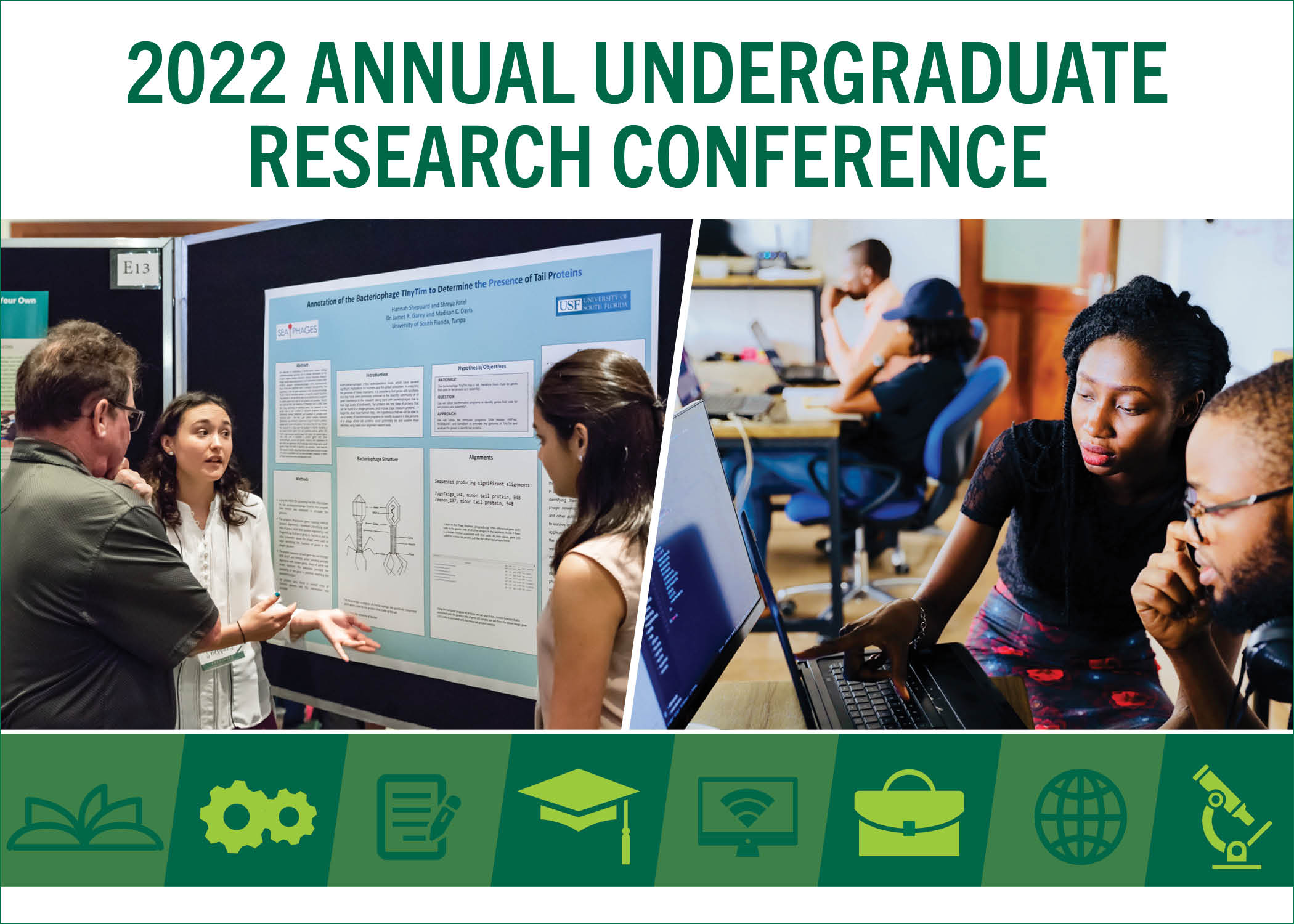The Source of Bias: How University Students' Primary Source of Information Impacts COVID-19 Attitudes and Behavior.
Loading...
Please select your campus affiliation
Tampa
Mentor Information
Dr. Donna Lee Ettel-Gambino
Description
Introduction:
Evidence suggests that students' primary source of information during the COVID-19 pandemic may influence their attitudes and whether or not they complied with CDC guidelines. The purpose of this study is to examine the relationship between students' primary source of COVID-19 information and their level of precaution.
Methods and Materials:
A causal comparative approach was utilized. A multivariate analysis of variance was conducted using SAS 9.4 (Cary, NC). The independent variable was the students' primary source of information. The dependent variables included adherence to CDC guidelines via; 1) hand hygiene; 2) mask compliance; 3) physical distancing; 4) students testing positive for COVID-19; 5) vaccination status; and 6) booster status.
Results:
This study indicates three statistically significant findings. (1) The proportion of students (95%) who reported hand washing for at least 20 seconds (p<0.03); (2) the proportion of students (96%) who agreed with avoiding contact with those who have tested positive (p<0.0001); (3) the proportion of students (66%) wearing a mask outdoors (p<0.04).
Discussion:
Findings suggest that students' primary source for obtaining COVID-19 information can impact COVID-19-related behaviors. It's noteworthy that only 43% of students considered the CDC as their primary platform. Of those, they were more likely to comply with masking outdoors, avoiding close contact with positive individuals, physical distancing, and receiving the COVID-19 booster.
Conclusion:
This study highlights the importance of the source used to seek COVID-19 information as it relates to precautions taken. As misinformation circulates the internet, it's crucial to ensure that the public is aware of where to find reliable COVID-19 recommendations.
The Source of Bias: How University Students' Primary Source of Information Impacts COVID-19 Attitudes and Behavior.
Introduction:
Evidence suggests that students' primary source of information during the COVID-19 pandemic may influence their attitudes and whether or not they complied with CDC guidelines. The purpose of this study is to examine the relationship between students' primary source of COVID-19 information and their level of precaution.
Methods and Materials:
A causal comparative approach was utilized. A multivariate analysis of variance was conducted using SAS 9.4 (Cary, NC). The independent variable was the students' primary source of information. The dependent variables included adherence to CDC guidelines via; 1) hand hygiene; 2) mask compliance; 3) physical distancing; 4) students testing positive for COVID-19; 5) vaccination status; and 6) booster status.
Results:
This study indicates three statistically significant findings. (1) The proportion of students (95%) who reported hand washing for at least 20 seconds (p<0.03); (2) the proportion of students (96%) who agreed with avoiding contact with those who have tested positive (p<0.0001); (3) the proportion of students (66%) wearing a mask outdoors (p<0.04).
Discussion:
Findings suggest that students' primary source for obtaining COVID-19 information can impact COVID-19-related behaviors. It's noteworthy that only 43% of students considered the CDC as their primary platform. Of those, they were more likely to comply with masking outdoors, avoiding close contact with positive individuals, physical distancing, and receiving the COVID-19 booster.
Conclusion:
This study highlights the importance of the source used to seek COVID-19 information as it relates to precautions taken. As misinformation circulates the internet, it's crucial to ensure that the public is aware of where to find reliable COVID-19 recommendations.



Comments
Poster Presentation